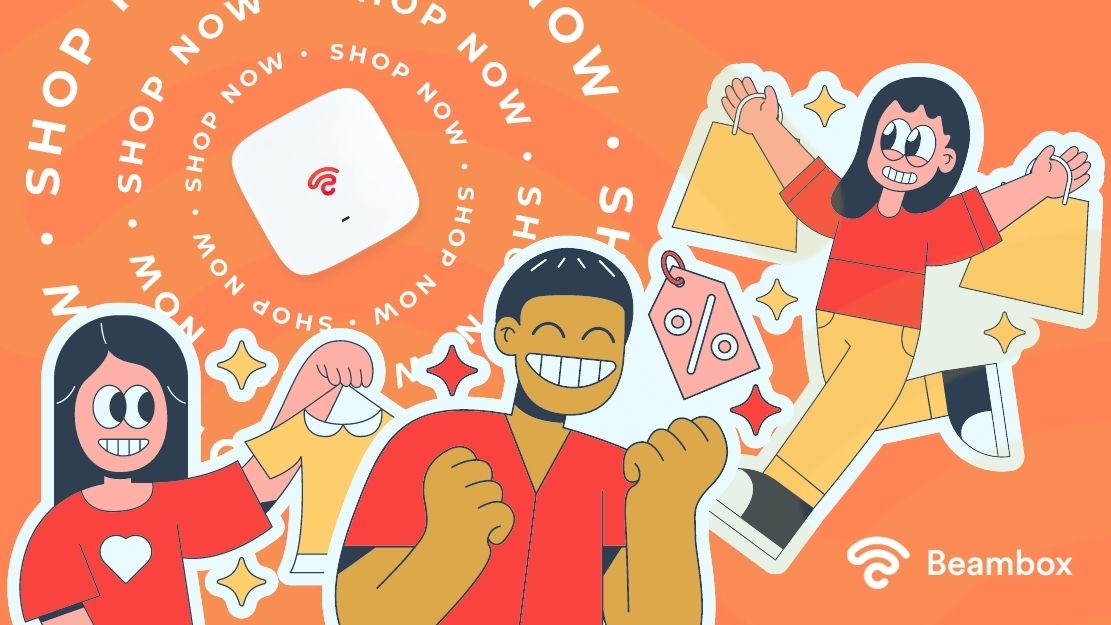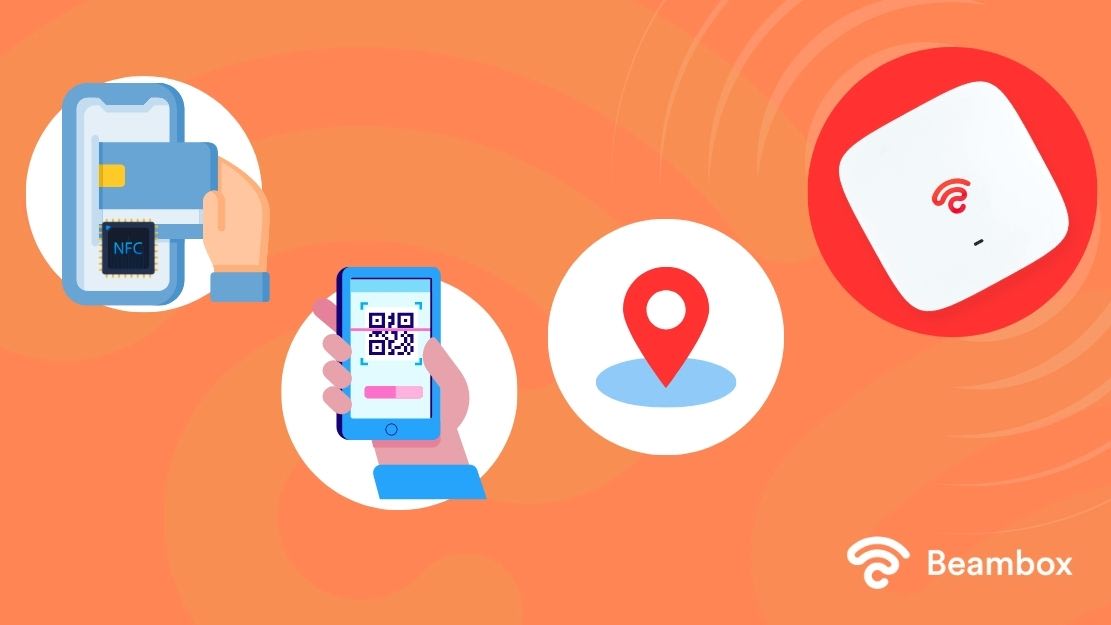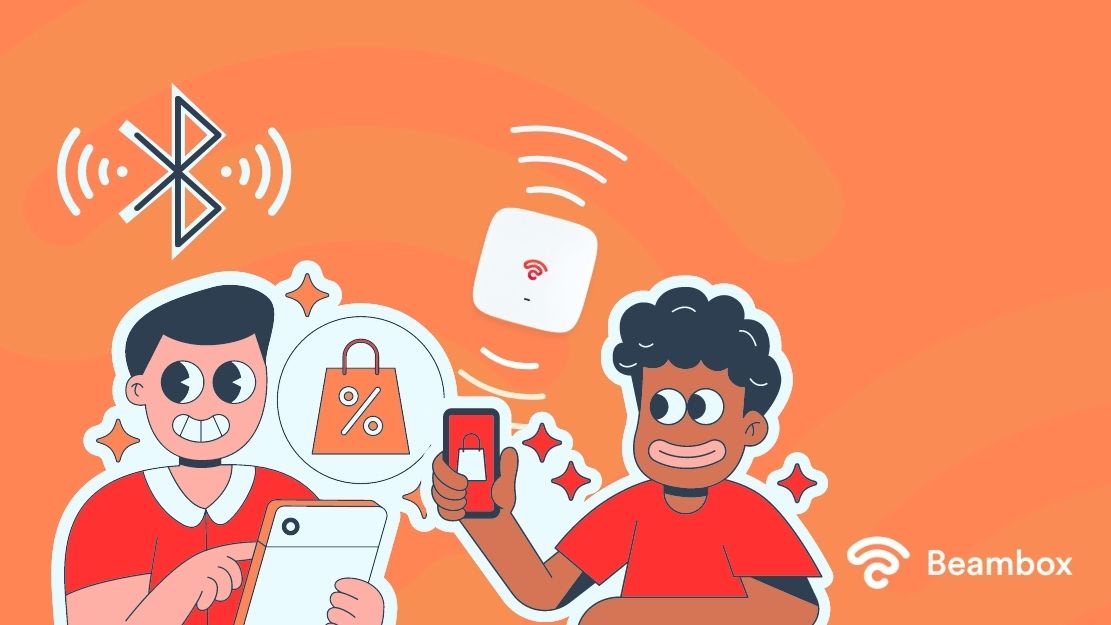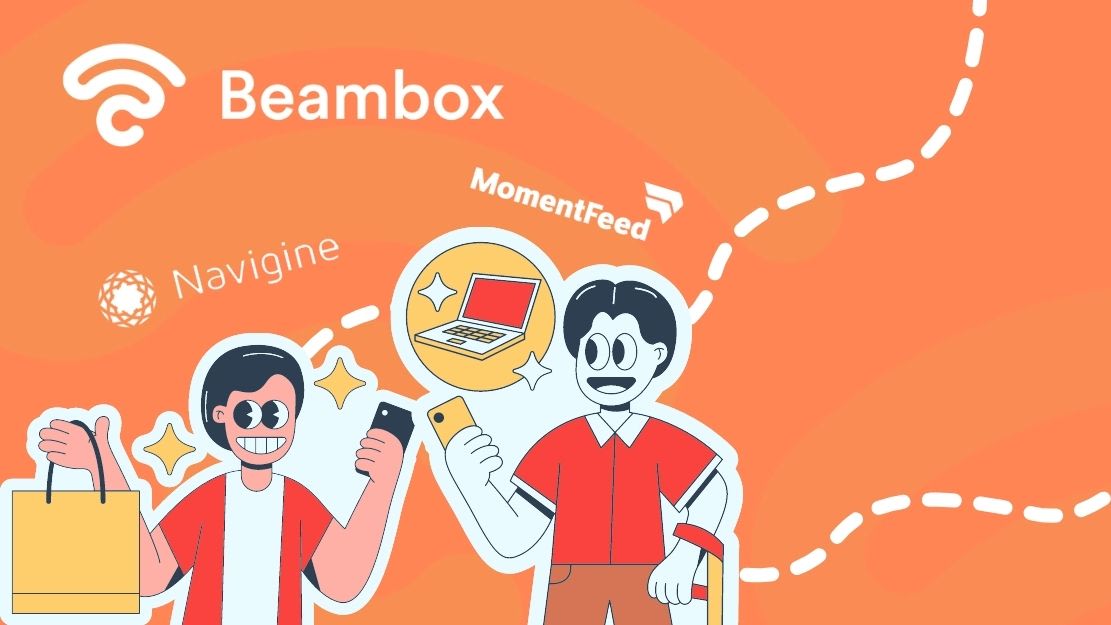The latest data shows that Google processes over 100,000 searches every second, translating to 164,470GB of internet traffic. That’s a lot of digital noise to cut through. But you can do it with the help of one handy strategy: proximity marketing.
This effective targeting method allows you to reach your customers at the right time and with the right message. Talk about a game-changer.
With this tool, you can drive potential customers to your establishment, increase footfall, and boost conversion rates. Here’s your complete guide to proximity-based marketing and how to set it up using your existing WiFi.

What Is Proximity Marketing
Proximity marketing refers to communicating with customers based on their proximity to your location. It’s also called “hyperlocal marketing.” We think of it as “right place, right time” marketing.
This strategy involves targeting a potential customer in your vicinity with relevant and personalized adverts or notifications. You can use this to prompt them to visit your business, make a purchase, or use your services.
How Does Proximity Marketing Work
How does proximity marketing work? The concept makes sense—advertise or message people based on where they are. But how do you do that? The answer is: through location services on mobile devices and other electronic devices. Proximity advertisers collect customer data to determine where you are in relation to their business or any given location.
Proximity advertising technologies may use various methods to send personalized mobile messages to devices within range. These include Bluetooth beacons, WiFi, geofencing, near-field communications (NFC), or QR codes. These targeted messages include a welcome greeting, special offers in nearby stores/aisles, or a prompt to leave feedback. Time it right, and this marketing strategy could make all the difference in converting a customer or upselling a product.
This version of Location-based marketing isn’t new. It’s been around since Apple introduced its iBeacon protocol in 2013. With the availability and relatively low cost of the technology required, proximity marketing boasts over a $52.46 billion valuation as an industry.

Why Should You Implement Proximity Marketing Devices?
The proximity marketing technique offers unique opportunities to influence customer behavior in your local area. Here are just some of the reasons you should give it a go.
It allows you to tailor marketing messages and promotions to your target market.
It triggers consumers’ impulsiveness to try a product/service or offer a special offer.
It allows you to communicate directly with potential consumers near you. Because of the convenience, they’re more likely to care about what you have to offer.
It increases conversion rates.
You’ll ethically obtain customer data because consumers must opt-in to receive your marketing messages.
You’ll gain a deeper understanding of customer needs and wants.
You have a greater chance of new and existing customers reacting positively to a call to action.

Types of Proximity Marketing Devices
There are various proximity marketing solutions you can utilize based on who your ideal customer groups are. These different technologies offer different ways to design your proximity marketing campaign.
These proximity technologies and devices determine your connection with potential customers near you via their mobile device. Let’s look at the most common technologies used for proximity marketing.
Proximity Marketing Beacons
Proximity marketing beacons use Bluetooth technology to locate and serve messages to potential clients. How? By scanning for Bluetooth-enabled devices within their proximity range. They then use that same Bluetooth signal to transmit data back and forth.
NFC
Near Field Communication, or NFC, is another way businesses collect location data. You’ll find this technology built into most modern smartphones. It allows users to make secure transactions, exchange digital content, and connect electronic devices with a touch.
It requires a distance of 4cm or less to initiate a connection between an NFC tag and another mobile device. An example of how NFC tags work is Google Pay or Apple Pay. When you tap your phone on a card reader, you’re connecting your phone to an NFC tag.
QR Codes
QR codes are an example of proximity advertising at work. The beauty of a QR code is it stores marketing data and communication, and you can deploy it almost anywhere. QR codes have a minimum radius of 25 cm (10 in). You can scale up the scanning radius pretty far, depending on the code size.
Geofencing
This proximity-based marketing technique uses GPS technology location data. Once it collects that, it uses that information to determine when a target customer enters predefined virtual parameters. Aka, when you enter a specific location that the Geofencer selected.
WiFi
The most common way to use proximity advertising is via WiFi. Suddenly you can turn a wireless internet connection into a marketing platform. You just have to choose the right WiFi system for your restaurant, cafe, hotel etc.

Proximity Marketing Examples
We’ll focus on Bluetooth beacons and WiFi for our proximity marketing examples. These are the most widely used location technologies for this marketing strategy.
Bluetooth Beacons
Bluetooth proximity marketing uses a beacon with a radio transmitter to scan for Bluetooth devices and transmit advertisements and notifications. Users deploy these beacons usually at storefronts, events, amusement parks, real estate properties, and other public venues.
For this to work, the target customer must have the relevant mobile app associated with the beacon on their device. Then, they also must enable push notifications for that app. For example, the app can be your brand app, with an ID number matching your beacon. (Like using the Target App while at Target.)
Walmart is an excellent example of a business establishment using Bluetooth beacons for proximity marketing. The retail giant partnered with GE to launch a unique iBeacon trial that used GE light bulbs to house beacons. The beacon-equipped LED bulbs tracked shoppers within the store and sent push notifications of specials and coupons to their smartphones. They also used those light bulbs to collect data from those clients via the Walmart App.
The Romanian retail chain Carrefour is another perfect example. The company installed beacons in 28 hypermarkets in Romania. They’re used as a simple, intuitive and fun app for customers to navigate inside the store from shelf to shelf.
The beacons also collect relevant behavioral data of visitors in the store. Beacon technology helped Carrefour increase user engagement rate by 400% and app users by 600% within seven months.
WiFi Proximity Marketing
WiFi Proximity Marketing is the most practical solution for most businesses. Why? Because most establishments already have a WiFi system installed to meet their guests’ connectivity needs. When customers connect to your WiFi, they give you a direct means of communication via their devices.
You can set up a WiFi marketing platform customized to gather customers’ email addresses or mobile numbers via a captive portal. With those contacts, you can:
- Build your email/SMS subscriber list
- Prompt your guests to follow you on social media
- Communicate a special offer or promotes an upcoming product or sale
- Prompt customers to leave feedback.
This is proximity marketing at its best because it utilizes one of the most in-demand aspects of modern life — WiFi. So if you’re simply offering wireless internet via a shared password, it might be time to rethink your strategy.
Bolivia’s Mall Las Brisas’ WiFi marketing strategy is a fantastic use-case example. The shopping mall installed a WiFi marketing platform to collect valuable customer data through social log-ins and customer-shared information. Here’s another example. Toronto’s Tokyo Smoke gained 35 new sign-ons per week, passively and effortlessly, by implementing Yelp’s WiFi marketing platform.

Proximity Marketing Agency
Suppose you’re ready to move forward with a proximity marketing strategy. In that case, you’d want the help of a specialized agency to integrate your technology into your overall marketing plan. Here are your top picks.
- Beambox. The company positions itself as “The easiest way to provide guest WiFi that grows loyalty.” Beambox does this by connecting, capturing, and keeping more customers with an all-in-one WiFi marketing platform. Beambox is a fully customizable WiFi system. It enables you to enhance the guest WiFi experience and provides intelligent tools to help you achieve your business goals.
- MomentFeed. MomentFeed’s mobile customer experience management software is ideal for multi-location brands. The software helps make your nearest location the best choice for every mobile customer.
- Navigine. This Russian company is a global provider of integrated mobile indoor wayfinding and navigation technologies. This includes proximity solutions to help improve visitor loyalty and safety, and business efficiency.

The Pros and Cons of Proximity Marketing
According to one survey, 91% of consumers are likelier to shop with brands that provide personalized recommendations and offers. This is an excellent argument for proximity marketing. As with any marketing strategy, however, it has pros and cons.
Proximity marketing is great if:
- Grabbing local business is crucial to your growth and profitability, and you’re having trouble increasing engagement and return visits.
- You have a branded app struggling to gain traction.
- You need a competitive edge to keep up with the local competition.
- You’re after immediate conversions rather than playing the long game.
- Providing a personalized customer experience is a top priority.
Proximity marketing may not be the right strategy for your business if:
- Local business isn’t essential for you.
- You’re already experiencing conversion issues (it’s not a free ticket to more accessible conversions. Something is likely amiss if people aren’t buying quickly from you).
- If you can’t follow federal, international or state regulations regarding personal data collection.
- You have concerns about privacy and accessing personal data.
- You don’t have the time to invest in another form of marketing.
- The last point above is crucial. This strategy takes time and effort. To get the desired results, you’ll need to implement multiple campaigns and generate various personalized offers. Like a loyalty program, discount coupon programs, or agreeing to offer free Wifi.
If this seems like too much extra work, wait until your business is more mature and stable.

How To Set Up Your Existing WiFi to Leverage the Power of Proximity Marketing Software
If you already have a free WiFi system for guests, use it for a proximity marketing strategy with Beambox. Beambox is a simple but innovative “plug-and-play” WiFi marketing software technology.
Just plug Beambox into your router and launch a secure guest network that you can customize to suit your needs. Beambox offers other installation options, such as cloud integration or self-installation software.
Using fully customizable proximity advertising for small businesses like Beambox can help you build and nurture customer connections. Create email or SMS subscriber lists, reward loyal customers with custom deals, and climb online ranking via real-time customer reviews. Accelerate your business growth and start your Beambox free trial today!